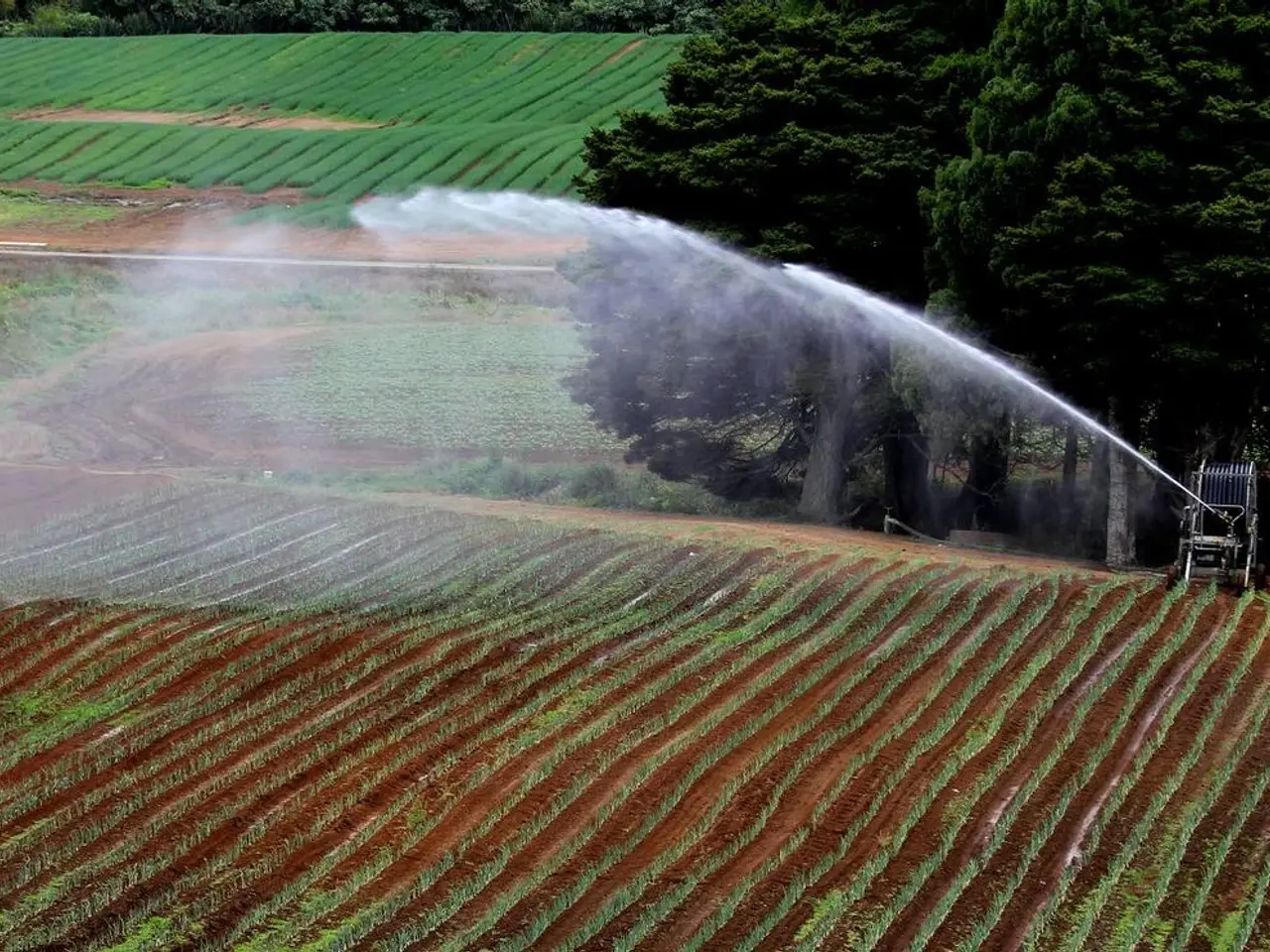Enhancing Agricultural Welfare in India: A Five-Step Strategy for Empowering Farmers
In an effort to bolster the agricultural sector and improve the livelihoods of farmers in India, a multi-faceted approach is being implemented. This strategy encompasses five key areas: agricultural infrastructure, financial support, technology, education, and sustainable practices.
1. **Strengthening Agricultural Infrastructure** - To reduce post-harvest losses and maintain produce quality, rural infrastructure such as warehouses, cold storage, packhouses, and sorting/grading centers will be expanded and enhanced. This includes supporting cluster-based infrastructure development through Farmer Producer Organizations (FPOs), enabling shared use and improving efficiency and cost-effectiveness. Digital platforms like e-NAM (National Agriculture Market) will be utilised for transparent price discovery and better market access for farmers.
2. **Enhanced Financial Support and Insurance** - The implementation of direct income support schemes such as PM-Kisan Yojana will provide annual funds to every farmer, helping to stabilise income and investment capacity. Access to affordable formal credit instruments like the Kisan Credit Card will be expanded, with increased credit limits to support inputs and mechanization. Crop insurance coverage under schemes like PM Fasal Bima Yojana will be expanded to protect farmers against climatic and market risks. Subsidies on critical inputs such as fertilizers will be provided to control input costs and improve profitability.
3. **Leveraging Technology for Precision and Efficiency** - Precision agriculture technologies, including drone-based spraying and digital crop monitoring tools, will be promoted to enable data-driven decisions that increase productivity. Agri-tech startups and platforms offering real-time soil health analysis, weather forecasting, and pest control will be supported. Digital marketing and supply chain platforms will be integrated to provide farmers with information on auction prices, demand forecasts, and logistics connectivity. Renewable energy technologies will be encouraged in fishery and allied agriculture sectors to boost allied rural incomes.
4. **Farmer Education and Capacity Building** - Training and awareness programs will be invested in to upskill farmers on sustainable practices and diversified cropping systems. Agri-entrepreneurship will be promoted by exposing farmers to international best practices, innovations, and quality enhancement techniques in production and marketing. Collective organizations such as cooperatives and FPOs will be supported to improve knowledge sharing, access to inputs, mechanization, and market leverage. Digital literacy and access to information via mobile/web apps will be expanded to empower farmers with real-time actionable data.
5. **Sustainable Agricultural Practices** - Water conservation will be encouraged through the creation of small water bodies at the village level and the adoption of efficient irrigation methods like drip irrigation to reduce water vulnerability. Intercropping and crop diversification practices that maintain soil health and enhance resilience to climate fluctuations will be promoted. Environmentally friendly input usage, organic farming methods, and integrated pest management will be supported to reduce chemical dependencies and maintain ecosystem balance. Fisheries and allied sectors will be developed with sustainable technologies and infrastructure to diversify rural livelihoods and increase income in an eco-friendly manner.
In addition to these strategies, farmers will be encouraged to focus on multiple crops instead of relying on a single cash crop to manage market risks and yield uncertainties, improve soil quality, and reduce pest infestations. Organizing standard programs can improve farmers' data and decision-making capabilities, focusing on areas such as crop management, post-harvest management, and soil health. Green extension associations will provide farmers with the latest updates, advancements, and guidance on various agricultural issues. Common farming practices such as the use of organic fertilizers, bug control strategies, and real soil can reduce dependence on harmful synthetic chemicals, improve soil quality, and lower costs.
Finally, promoting sustainable farming practices can protect the environment, provide longer-term benefits for farmers, and improve their resilience to climate change and market challenges. Agroforestry, the combination of farming with tree improvement, can enhance biodiversity, stimulate soil development, and generate additional revenue. Together, these strategies provide a comprehensive roadmap that balances productivity improvement, risk mitigation, income enhancement, and sustainable resource use, aimed at transforming Indian agriculture into a globally competitive and farmer-centric sector.
- **Using Technology for Crop Management** - Digital crop monitoring tools and agri-tech startups offering real-time soil health analysis, weather forecasting, and pest control will not only increase productivity but also enable data-driven decisions, as part of the multi-faceted approach to boosting the agricultural sector in India.
- **Empowering Farmers with Green Extension Associations** - Green extension associations can provide the latest updates, advancements, and guidance on various agricultural issues, helping farmers in India become more resilient to climate change and market challenges, which is crucial in the ongoing effort to improve the livelihoods of farmers through technological innovation and sustainable practices.




